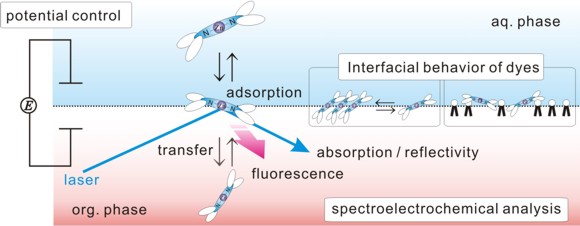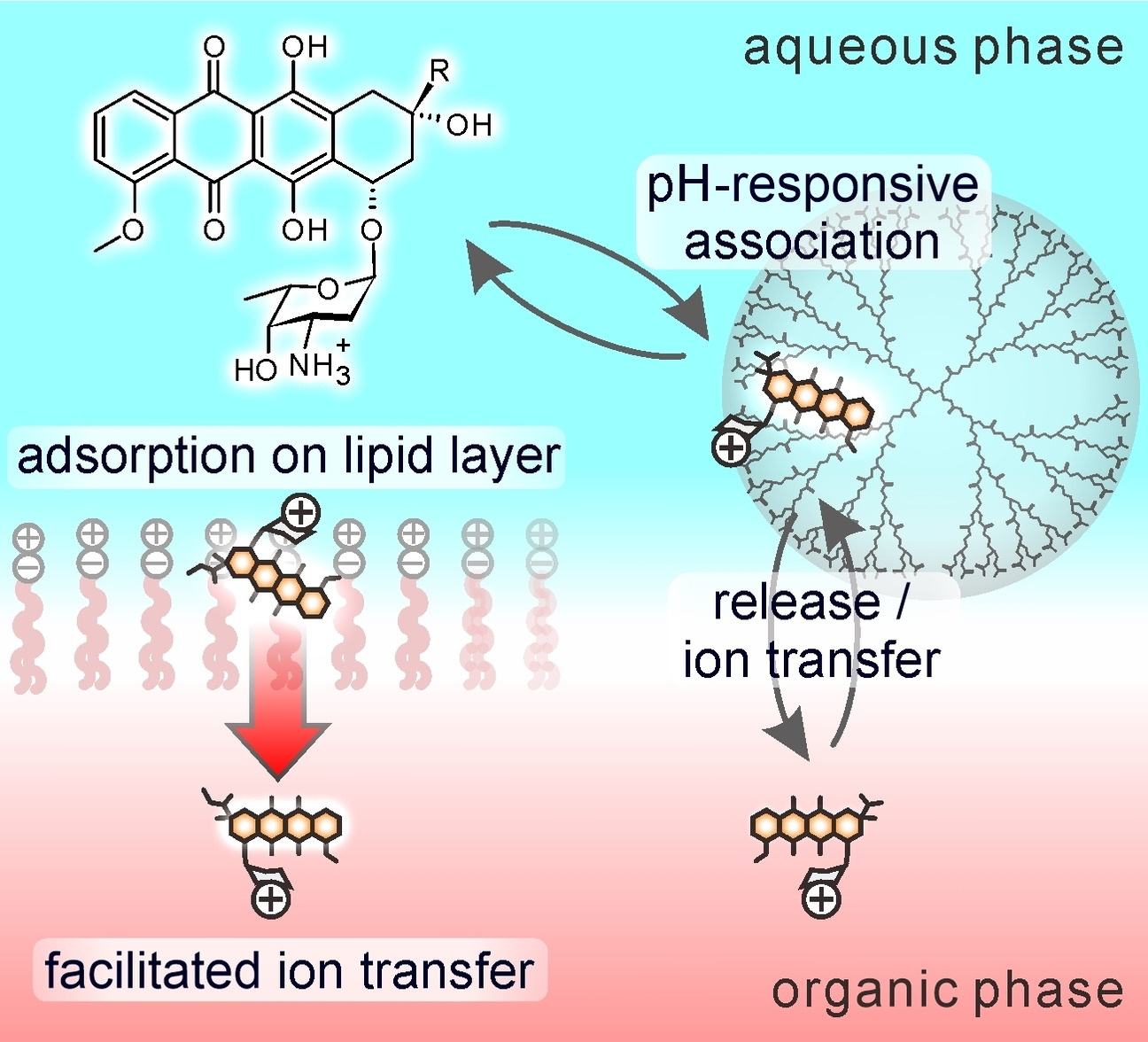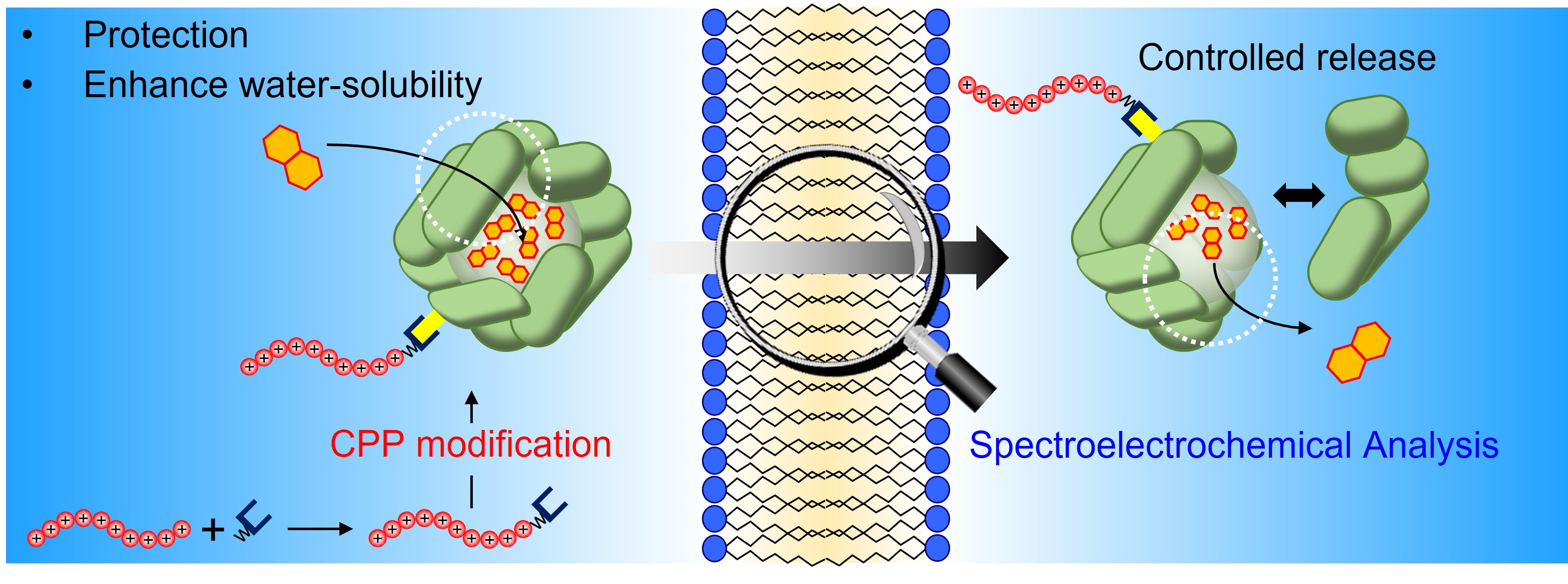RESEARCH
Spectroelectrochemical Study of Charge Transfer Mechanism at Liquid/Liquid Interfaces

The interfacial behavior of ionic dyes at the polarized liquid/liquid interface is studied by spectroelectrochemical techniques. By analyzing the appropriate optical signal instead of the overall current responses, the interfacial behavior of the target dye species could be studied in the absence of the interference with non-chromophoric species. A lock-in detection of ac-modulated optical signals under the potential-modulation superimposed on a linear potential sweep improves the sensitivity and the selectivity to the interfacial phenomena of dye species.
Potential-modulated fluorescence (PMF) spectroscopy has been applied for the ion-transfer reaction across the liquid/liquid interface. The high sensitivity of PMF spectroscopy to interfacial phenomena, especially adsorption, has allowed us to investigate the various fluorescent species, such as porphyrin, xanthene, and pyrene derivatives. The combination of PMF spectroscopy and conventional electrochemical techniques could uncover the interfacial adsorption and transfer mechanisms.
Dynamic Control of Ion Transfer Reaction through Association with Dendritic Polymers at Liquid/Liquid Interfaces

The phase transfer feature of chemical species is mainly attributed to their functional groups and charged states. Dendritic polymers such as dendrimer can associate with ionic species through the encapsulation into its internal cavity and the interaction with its terminal functional groups.
We apply the dendritic polymer as functional molecular carrier to control the ionic distribution and reactivity at liquid/liquid interfaces and on membrane surfaces. It has been demonstrated that ionic species including functional dyes, drugs, bio-related substances associate with dendritic polymers and their charge transfer mechanism are controllable by tuning external stimuli. In particular, the potential- and pH-responsive drug loading and release on biomimetic membrane surfaces have promise as functional drug delivery systems.
Development of CD measurement system based on spectral interferometry

Circular dichroism (CD) measurement has been widely used as a spectrscopic characterization technique for chiral compounds. However, conventional CD detection scheme was intrinsically insensitive due to huge achiral background. Recently, we developed a CD spectrometer based on spectral interferometry and elliptical polarization detection. The developed system enabled CD spectral acquisition in several seconds by suppressing the undesirable background significantly. The system was capable of tracing formation kinetics of chiral complexes successfully, promising as a tool for reaction analysis of chiral compounds.
Intermolecular interactions and interfacial reaction mechanisms of cell penetrating peptides (CPPs) and protein carriers modified with CPPs

Nano carriers with encapsulating ability are attracting attention in drug delivery systems (DDS). Proteins have a potential ability as carriers but cannot transfer biomembrane. CPPs are very useful to dramatically enhance the membrane permeability. Creating novel carriers with CPPs and elucidating its encapsulation behavior and biomembrane permeability mechanisms lead to a highly functional DDS.
